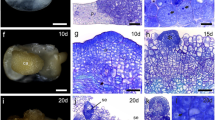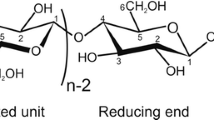Summary.
A survey is presented of the architecture of secondary wall ingrowths in transfer cells from various taxa based on scanning electron microscopy. Wall ingrowths are a distinguishing feature of transfer cells and serve to amplify the plasma membrane surface area available for solute transport. Morphologically, two categories of ingrowths are recognized: reticulate and flange. Reticulate-type wall ingrowths are characterized by the deposition of small papillae that emerge from the underlying wall at discrete but apparently random loci, then branch and interconnect to form a complex labyrinth of variable morphology. In comparison, flange-type ingrowths are deposited as curvilinear ribs of wall material that remain in contact with the underlying wall along their length and become variously elaborate in different transfer cell types. This paper discusses the morphology of different types of wall ingrowths in relation to existing models for deposition of other secondary cell walls.
Similar content being viewed by others
Author information
Authors and Affiliations
Additional information
Received July 20, 2001 Accepted November 29, 2001
Rights and permissions
About this article
Cite this article
Talbot, M., Offler, C. & McCurdy, D. Transfer cell wall architecture: a contribution towards understanding localized wall deposition. Protoplasma 219, 197–209 (2002). https://doi.org/10.1007/s007090200021
Issue Date:
DOI: https://doi.org/10.1007/s007090200021




